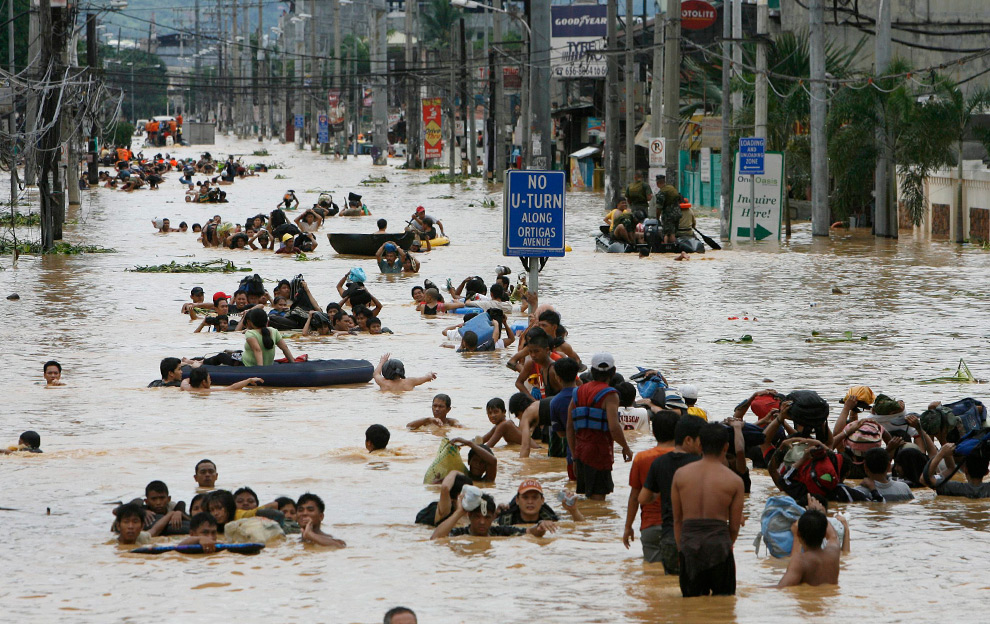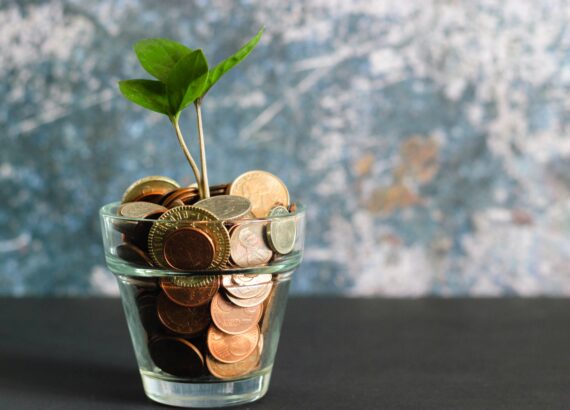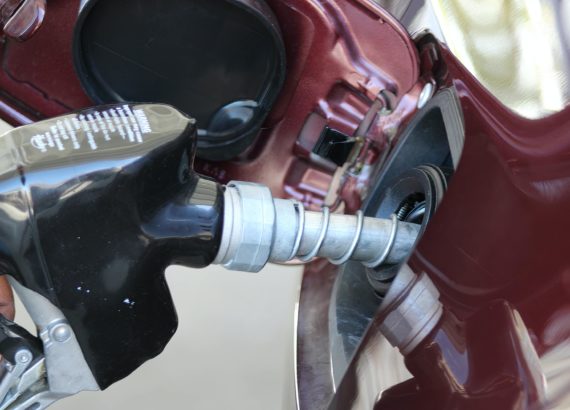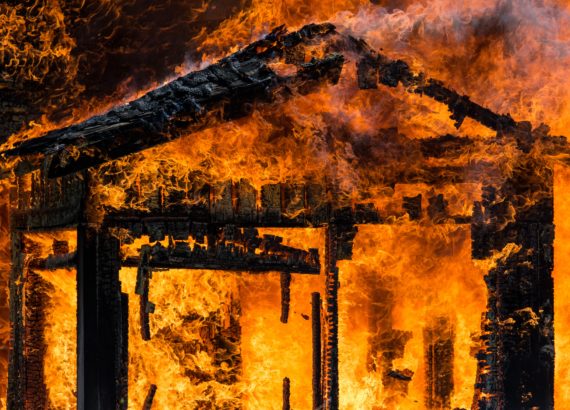Disaster Preparedness – A Required Way of Life

Photo credit: Reuters | Erik De Castro
The picture above shows the effects of “Ondoy” – one of the most damaging typhoons that hit Metro Manila and neighboring areas in 2009 by virtue of the amount of rainfall it gave. Scenes like this underscore the need for better disaster preparedness measures from concerned agencies and the need for citizens to be more participative in ensuring their own safety.
With the highly unpredictable weather and environmental conditions humankind are being subjected to in recent years, it is obvious that disaster preparedness must become a way of life if survival is to be attained. The truths that used to hold in terms of predicting the outcome and consequences of expected and unexpected natural disasters appear to have been shaken by nature’s own mind. It will not hold back because of the holiday season as the country braces itself for another super typhoon called Pablo.
What is Disaster Preparedness?
Disaster preparedness is defined as the change of behavior to limit the impact of disaster events on people. It is not a one-step solution but rather a continuous process that involves planning, training, managing, creating, and monitoring the facilities that have been put in place for the purpose. It cannot stop any disaster from happening but it can largely mitigate the effects with proper education of people.
All over the world, countries and their citizens face threats posed by nature in the form of flood and flash-floods earthquake, wildfire, heatwave, tsunami, volcano eruption, hurricane, mudslides, drought, tornado and winter-storms. Man-made disasters such as chemical emergencies and terrorism can be equally as threatening. The response capability of government agencies and other entities is very critical but it is important that citizens help themselves by preparing for eventualities.
Taking Responsibility
Relief workers will not be able to reach everyone immediately since disasters tend to affect a big number of the population thus the term. Disasters can either force families out of their homes or prevent them from coming out. Either way is dangerous especially if it will entail an extended period of time before actual help comes.
Safety and Awareness Advocate
Eveready Philippines has taken an active stance in educating the public with regards to the proper things to do when disaster strikes. Although this advocacy was first presented to the public at the height of the typhoon season, it is evident that there is no longer any safe month where it can be said that disaster preparedness is not necessary. The company believes that being ready starts with being aware of threatening situations and having the proper knowledge and equipment required to be ready for any calamity.
Important Reminders in Times of Expected Calamity
Eveready has provided for the most important things to remember as a regular practice instead of being a last-minute resort in the face of calamity and disasters:
1. Keep watch over the situation whether or not you are located near disaster-prone areas.
2. Be oriented with PAGASA’s Public Storm Warning Signals and their color-coded rainfall advisory. Storm warning signals correspond to storm intensity ranging from 1 to 4 while rainfall advisory tracks the level of rainfall. Yellow means heavy rain, Orange means intense rain which requires people to be on alert, while Red means danger which will require immediate evacuation.
3. Prepare basic necessities for food, clothing, and shelter. This will involve making sure that the house is secure and waterways are free from debris. Preferred food and drink must have a long shelf-life.
4. Prepare an emergency kit that includes a multi-tool knife, First Aid materials, radios, and flashlights. Cellphones must be charged to be ready for power interruption. Emergency numbers must be at hand.
5. Long-lasting batteries are very important at this time since it can spell the difference between being rescued or being left behind.
Being ready at all times provides a fighting chance of survival if and when disaster strikes.
My Say
Whenever we are faced with possible disastrous situations, we always hope that it will come to pass with minimal damage to life and property if it is not possible to totally avoid it. Super typhoon Pablo may or may not come in the way it is expected by weather forecasters and we should be thankful if we come out more prepared for the actual hit. Filipinos have often been admired for resiliency but we can go further. We can set the example by making disaster preparedness a way of life.













che
I hope every one of us know the importance of disaster preparedness even when we live in a place where we think is safe. When wrath of nature strikes, it chooses no place.
Teresa Martinez
You’re right,natural disasters can happen anywhere and to anyone.
Traveling Morion
Iba na ang Handa. Disaster preparedness awareness lie this must be spread to avoid the ill effects of hazards
Teresa Martinez
We cannot usually prevent natural calamities from happening bu we can help minimize casualties and damage.
gagay
I guess, this article deserve a share to, not only bloggers, every Filipino…this is what we should do.
Teresa Martinez
Every bit of information helps when it comes to disaster preparedness.
lanie
Should always be alert to our environment, dahil pag kalikasan na ang gumawa wala tayong magagawa kundi ang mag pray nalang! Just like the typhoon Pablo today, they have many people have died. Very sad!
Teresa Martinez
After doing everything humanly possible, there is nothing left to do but pray for safety.
Carizza Chua ۰ᴥ۰ (@carizzachua)
im really worried for our environment. it’s getting worse everyday.
Teresa Martinez
Yes, the situation is quite alarming but we can still do something to prevent large-scale damage by stopping the abuses committed on the environment.
#TownExplorer | @edmaration
Very true mommy Tere, personally I can relate since I also participated in making the masterplan for disaster risk reduction and management in our barangay 🙂 Prevention is better tha cure 🙂
Teresa Martinez
That is quite noble of you and everyone should try to do his or her part to contribute to the solution.
Franc Ramon
We should always be prepared as this can really save lives.
Teresa Martinez
The life we save may be our own and our family.
jemimahonline
We should always be prepared and its good that there are companies willing to take part in the safety and public awareness of the people.
Teresa Martinez
Everyone should do his/her part in disaster preparedness.
Pepper Tan
Disaster preparedness is something we should all take seriously. We simply can never tell when disaster strikes. The last thing we want is to be caught unawares.
Teresa Martinez
Yes, we will never know how much the simplest of preparation can be of use when calamity strikes.
sir rob
The only thing is, people always misunderstood the worth of prevention and it seems to be more expensive than cure.
Teresa Martinez
That is a sad truth which we should try to change.